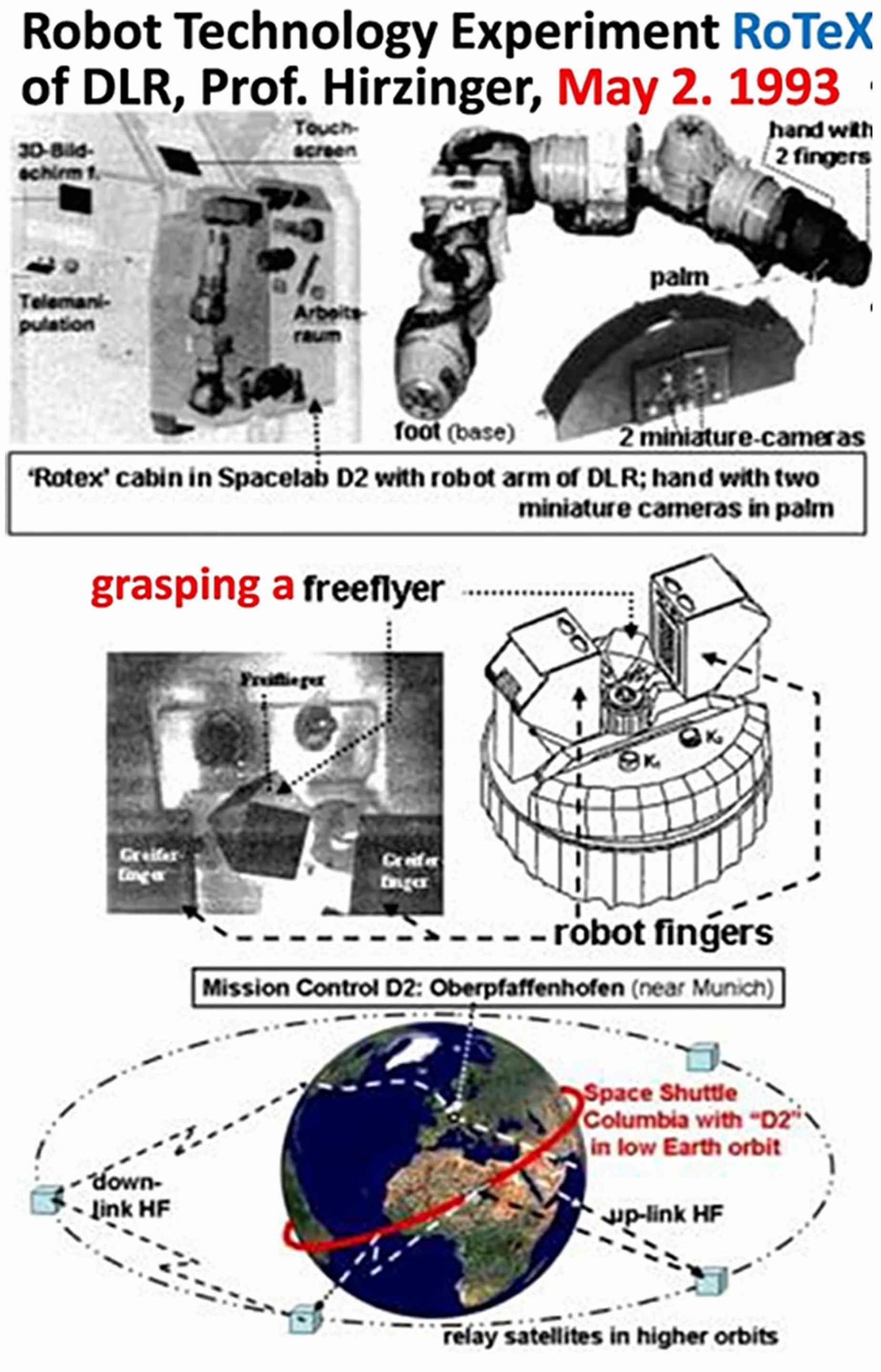SpaceLab D2 on board Space Shuttle Orbiter ‘Columbia’ (1993)
[with DLR Oberpfaffenhofen, ‘Robot Technology Experiment’, Prof. G. Hirzinger]
- Robot arm [Hirzinger et al. 1994] with 4 sections plus a two-fingered hand (see top right of figure).
- arm secluded in a cabin of size ~ 50x80x110 cm (see top left of figure) within the German SpaceLab D2 on board Space Shuttle orbiter ‘Columbia’.
- In the palm of the robot hand 2 miniature cameras were mounted (K1 and K2, center right); there were many more sensors integrated in the hand and the fingers [Hirzinger et al. 1994].
- Robot control was to be remote from “Mission control” in Oberpfaffenhofen, but autonomous (without a human in the loop); a variable time delay from image taking till control implementation on board of up to 7 seconds occurred due to complex routing through several satellites and computer centers on the ground (see bottom figure).
- Initial pointing of the robot arm was done by a human operator so that the free-flyer was in the field of view of the cameras.
- A transputer system was used for vision [Dickmanns D 1997].
For experimental results with the US-Space-Shuttle flight ‚Columbia-D2‘ in May 1993 see
A.7 Vision-guided grasping in Space
Video – ROTEX- GraspingInSpace 1993
References
Hirzinger G, Brunner B, Dietrich J, Heindl H (1994). Rotex – The first remotely controlled robot in Space. In: Proc. IEEE Conf. on Robotics and Automation, San Diego, CA, May 1994, pp 2604-2611
Dickmanns ED, Fagerer C, Dickmanns D (1994). Visual Grasping with Long Delay Time of a Free Floating Object in Orbit. 4th IFAC Symposium on Robot Control (SY.RO.CO.’94), Capri, Italy, pp 947-952 Abstract
Fagerer C, Dickmanns D, Dickmanns ED (1994). Visual Grasping with Long Delay Time of a Free Floating Object in Orbit. J. Autonomous Robots, Vol. 1, No. 1, Kluwer Academic Publishers, Boston
Fagerer C (1996). Automatische Teleoperation eines Tracking- und Greifvorgangs im Weltraum basierend auf Bilddatenauswertung. Dissertation, UniBwM / LRT. Kurzfassung
Dickmanns D (1997). Rahmensystem für visuelle Wahrnehmung veränderlicher Szenen durch Computer. Diss., UniBwM, INF. Zusammenfassung
